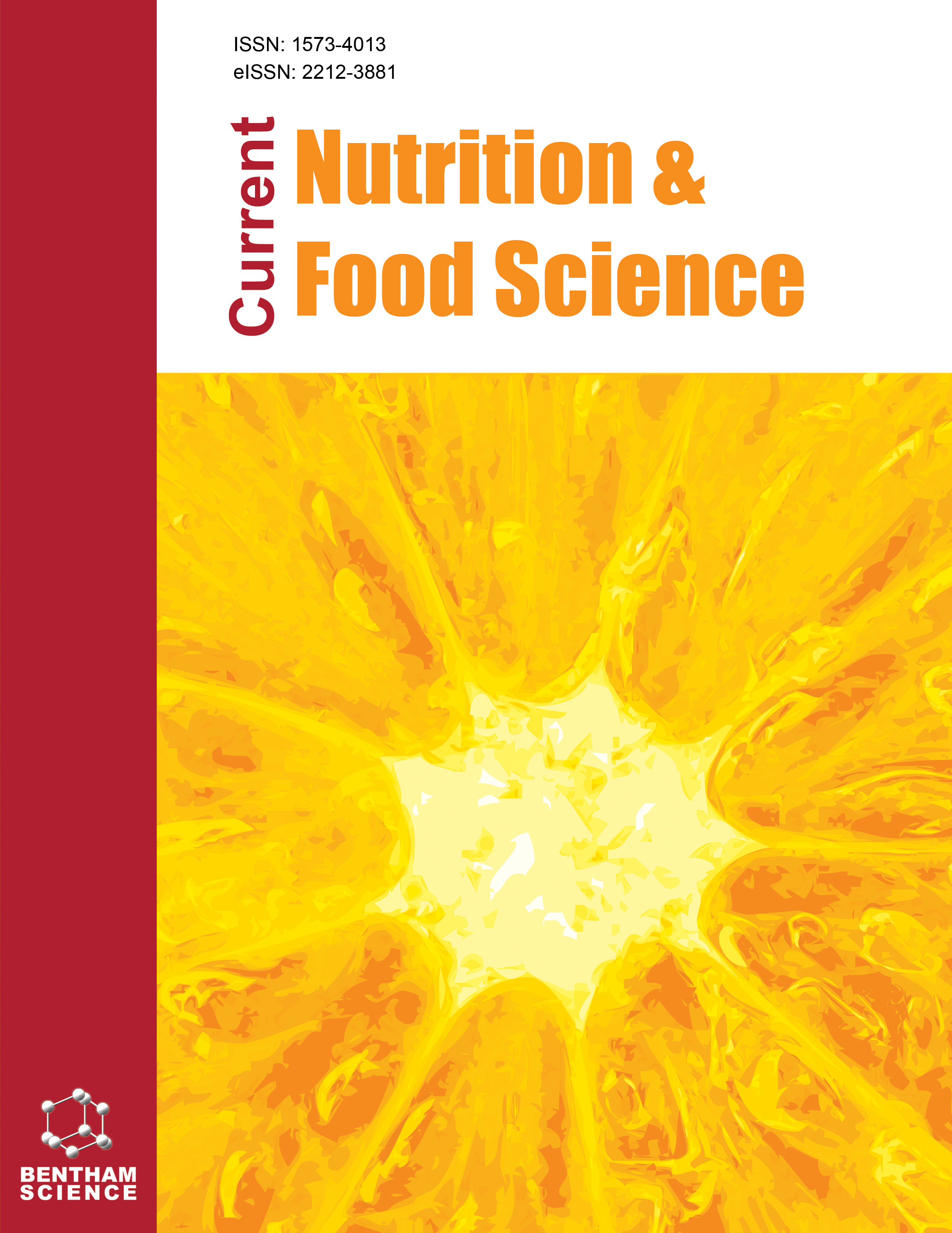- Home
- A-Z Publications
- Current Nutrition & Food Science
- Previous Issues
- Volume 18, Issue 7, 2022
Current Nutrition & Food Science - Volume 18, Issue 7, 2022
Volume 18, Issue 7, 2022
-
-
Vitamin K as a Simple but Efficient Add-on to the Current Treatment Regime of COVID-19: A Narrative Review
More LessAuthors: Souparnika Sreelatha, Nayana Devang and Aradhana MaratheBackground: Intravascular thrombosis and pulmonary fibrosis in COVID-19 patients with pneumonia are significantly associated with the severity of the disease. Vitamin K is known to balance the coagulation mechanisms and also prevent calcification and fibrosis of the extrahepatic soft tissues. This narrative review focuses on the role of vitamin K as a linking factor for thrombotic as well as pulmonary complications of COVID-19. Read More
-
-
-
Effects of Punica granatum Fruit (a Super Food) Juice on Human Health
More LessAuthors: Luigi Ferrara, Marko Joksimovic and Stefania D'AngeloBackground: One of the oldest known edible fruits, the pomegranate (Punica granatum L.), is now widely consumed worldwide. Its fruits and seed are rich in many bioactive compounds, such as polyphenols, and the scientific interest in this plant has been constantly growing in recent years. Introduction: Pomegranate fruit and its juice have been shown to have health benefits relating to their antioxidant and anti-inflammator Read More
-
-
-
Application of Herbal Plants in Organic Poultry Nutrition and Production
More LessAuthors: Mohamad H. Shahrajabian, Qi Cheng and Wenli SunBackground: Medicinal plants and natural feed additives are the most important alternatives in animal production, especially in broiler production. Objective: In this mini-review article, some important medicinal herbs and plants with positive effects on organic broiler production have been highlighted. Methods: A literature search was conducted using Science Direct, Google, Google Scholar, Springer, Medline, and PubMed. Read More
-
-
-
Effects of Vitamin D Levels on Cardiovascular Diseases: A Systematic Review
More LessAuthors: Paulo Víctor de Lima Sousa, Larisse M. Nascimento, Amanda F. M. de Oliveira, Gleyson Moura dos Santos, Alana Rafaela da Silva Moura, Maísa Guimarães Silva Primo, Adriana de Azevedo Paiva, Betânia de Jesus e Silva de Almendra Freitas, Cecília Maria Resende Gonçalves de Carvalho, Maria do Carmo de Carvalho e Martins and Karoline de Macêdo Gonçalves FrotaBackground: Cardiovascular diseases (CVDs) are a group of pathologies that involve heart and blood vessel disorders and are considered the main cause of death in the world. Epidemiological studies have shown the association between low vitamin D (VD) levels and CVD. This vitamin, in addition to acting on bone metabolism, plays a role in modulating the cardiovascular system. Objective: The present study assesses the Read More
-
-
-
Community-based Interventions to Reduce Fat Intake in Healthy Populations: A Systematic Review and Meta-Analysis
More LessBackground: Reducing fat intake is a major focus of most dietary recommendations aiming to prevent chronic diseases. Thus, this study aimed to summarize community-based interventions for reducing fat consumption among healthy people. Materials and Methods: According to PRISMA guidelines, in this systematic review and metaanalysis, databases including PubMed/MEDLINE, Scopus, EMBASE, Cochrane Library, Web Read More
-
-
-
Development of Decision Support System Platform for Daily Dietary Plan
More LessAuthors: Suwimon Kooptiwoot and Bagher JavadiBackground: Solving health issues needs accurate and significant information regarding food consumption. Recently, data analysis and communication have provided outstanding and robust approaches to fulfill the necessity of scientific information and help in decisionmaking in many fields. Many evidence has reported that with little information, better decisions could be achieved. Objective: This research aimed Read More
-
-
-
The Benefits of Midmorning Snack to Combat Stunting: A Longitudinal Panel Study in the Riau Province of Indonesia
More LessAuthors: Aslis W. Hayati and Hardinsyah RidwanAim: The aim of this research was to help stunted adolescents improve their nutritional status. Background: Stunting is a leading global nutritional problem, especially in developing countries such as Indonesia. This was a longitudinal panel study in the SMP Negeri 3 Pekanbaru Riau Province Junior High School in Indonesia. Objective: The objective of this study was to determine the impact of calcium and phosphorus suppleme Read More
-
Volumes & issues
-
Volume 21 (2025)
-
Volume 20 (2024)
-
Volume 19 (2023)
-
Volume 18 (2022)
-
Volume 17 (2021)
-
Volume 16 (2020)
-
Volume 15 (2019)
-
Volume 14 (2018)
-
Volume 13 (2017)
-
Volume 12 (2016)
-
Volume 11 (2015)
-
Volume 10 (2014)
-
Volume 9 (2013)
-
Volume 8 (2012)
-
Volume 7 (2011)
-
Volume 6 (2010)
-
Volume 5 (2009)
-
Volume 4 (2008)
-
Volume 3 (2007)
-
Volume 2 (2006)
-
Volume 1 (2005)
Most Read This Month
Article
content/journals/cnf
Journal
10
5
false
en


